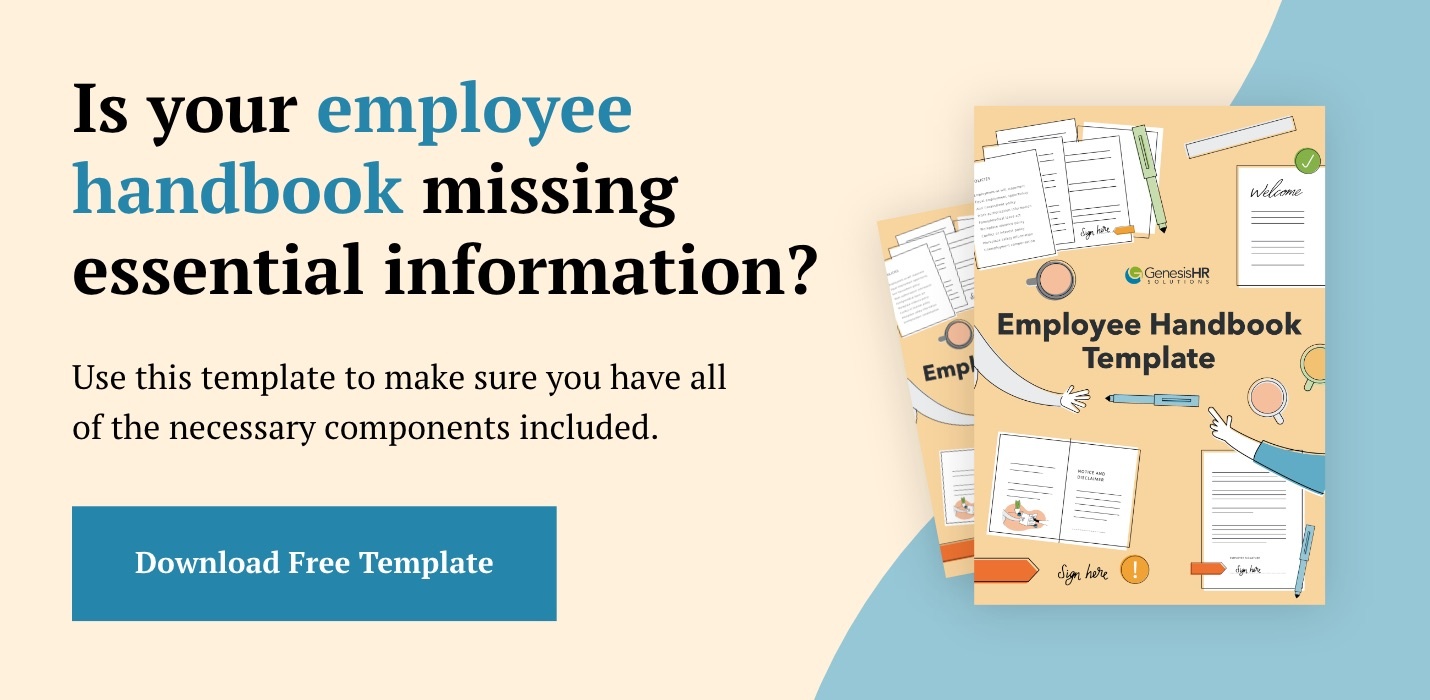Hiring employees but failing to provide them with a solid base of training is a good way to lose talent. One study shows that professional development can increase retention by up to 34%. On top of that, the cost of replacing an employee is high—on average, it costs a company 6 to 9 months of an employee’s salary to replace him or her. Stats like these highlight just how crucial it is to provide thorough, ongoing training to all of your employees, including your new hires. Too many companies bring excellent, qualified employees on board but assume they will figure things out on their own time—a mistake that could prove costly.
Hiring employees but failing to provide them with a solid base of training is a good way to lose talent. Click To TweetIn this article, we’ll discuss how you can avoid this revolving door through employee training. We’ll review types of training methods for employees, as well as some basic steps to implement employee training at your organization.
Download this free checklist to learn exactly what you need to do when onboarding new hires to your company.
7 Types Of Employee Training To Jumpstart Your New Hires
There are many types of employee training available; your company may use any or all of these types in combination.
1. Classroom Training
This type of training is the most widely used. It is reminiscent of traditional, teacher-led classes; in this case, a facilitator leads the group. In-person training allows for feedback, questions and answers, and clarification of concepts.
Example: One example of classroom training would be having all your employees gather for a meeting while the HR manager reviews a new, recently implemented safety procedure.
2. Technology-based Training
This training doesn’t require a “live” facilitator; instead, it is done via computer programs, apps, or websites. It’s convenient for managers (who don’t actually need to be present for these types of training) and learners (who can finish the programs at their own pace and on their own time). However, tech-based training does have a drawback in that it offers limited feedback or chance to answer follow-up questions.
Examples: Annual Harassment Refresher training, Annual Safety training, Review of Employee Handbook, or any other compliance training requiring annual renewal
3. Hands-On Training
Hands-on training is a more project-based, practical approach that allows the new hire to jump in directly to their roles in a safer environment. This type of training is the most preferred training method for both men and women; 52% of Americans listed active participation through hands-on training as the best learning method.
Example: Shadow-based, meaning the employee jumps in and begins work with a supervisor monitoring their performance either side by side at a work station or on a recorded call
4. Video Training
Like technology-based training, video training is easy to implement. However, it can be difficult for those being trained to get clarification regarding questions they may have, or to have follow-up questions answered in a timely manner. In order for video to be an effective training method for employees, you must make sure the videos you’re showing are well-produced, extremely focused on the training subject, interesting to the trainee, and a reasonable length. No one wants to watch a boring, three-hour video (nor will anyone pay attention for that long, either!)
Example: Safety training is often distributed in this format, with role play scenarios throughout the video. You can always have the participants take a quiz on the topics covered to evaluate the retention of the material, or conduct a group discussion to clarify the content.
5. Role Playing
Role playing is an effective training method, especially for problem-type situations that all employees should know how to handle. By training new hires in this “live” situation before they encounter it on the job, you’re giving them a preview of what they may encounter as well as helpful ways to respond. Plus, role-play situations usually provide teachable moments that can be valuable for learning.
Example: For a cashier role, best practice would be to have some mock sales occur, with the credit card transactions and/or money exchange, as well as possibly an irate customer to see how the employee would respond.
6. Reading
An old standby, required reading isn’t a training method we recommend using on its own very often, but it can be useful in some situations. It is best used as preparation for an in-person training type, because it guarantees your trainees will have some sort of follow-up to what they read on their own.
Examples: Review of training materials or software prior to hands-on training; review of previous work completion to see the style of how and what is expected
7. Simulators
Simulated experiences that are modeled on real-life experiences are not commonly used in training, but for situations when a new hire needs to know exactly how something looks and feels, they are a must have. (Think airplane pilots, for example—we want them to know how flying a jet feels before they take a plane in the air, and simulators make that happen.) The downside? Simulations are almost always very, very expensive.
Examples: Pilot training and law enforcement
Who should run your training sessions?
The answer to this question varies depending on the specific training you’re doing. While training should always be done under the supervision of your HR team, other internal and external people may be involved. This includes (but is certainly not limited to):
- Safety teams
- Production staff manager in a production environment
- Warehouse manager
- Managers and/or Supervisors
- EMS or first responders
- Local law enforcement
- Outside services
What types of training should you do with new hires?
While there are a number of types of training that might be required for your company, two types of training that you absolutely need to do as soon as possible are safety and professional training.
Safety: Safety training is especially crucial in production environments, but it is important for all employers.
- Safety procedures should be presented on new employees’ first day. This should include a discussion of escape routes, fire extinguisher locations, first aid, AED, biohazard, fire drills, active shooter drills, and evacuations.
- Clean room environments: appropriate clothing, documentation, cleaning requirements for machinery
- Heavy equipment protocol
- Personal protective equipment (PPE), including hearing, vision protection, shoes, gloves, etc.—whatever the job requires
Professional:
- Tour of the facility
- Escape routes
- Handbook
- Policies and procedures
- Hours/lunch policies
How To Train New Hires: 6 Basic Steps
Now that you know the types of training methods in human resource management, if you may be wondering about the best ways to create training plans for your new hires. Here are some basic steps and best practices to consider:
- Develop a training process. Assess and develop your course material. Why do you need this training? What is your short-range goal? Your training should fit the needs of the organization and your people, so if it needs to look a little different than standard training processes, that’s OK!
- Determine what style of training to use. Look at your trainee demographics and determine if training should happen in the classroom, online, individually, etc.
- Prepare the training materials and style of delivery.
- Train, then evaluate once training is complete.
- Fine tune your training offering. What went well? What can be improved upon from your perspective?
- Follow up with trainees. Ask them what they think can be improved, what they have questions about and what else they need to know on this topic. Offer additional training as needed.
This cycle should repeat itself constantly, but it should also be changing and improving each time training is offered.
Considerations Of DIY Training
Training your employees is a necessity, however, it’s common for small and mid-sized business owners and leaders to run into some problems with creating and implementing their own training programs:
- It’s cost-prohibitive to train to the level you desire. Limited resources or lack of a training budget may keep you from developing your talent in the way you want to.
- You may not have a dedicated trainer on staff to oversee and implement your trainings.
- As the HR leader, you may be overwhelmed with the training requirements (and worried you’re not in compliance).
- The time commitment can be daunting. The types of training required, number of people who have to be trained, retraining timetables, etc.—it can all be too much for one person to keep tabs on!
That’s where GenesisHR comes in!
At GenesisHR, we can take over the legwork of the entire training process for you.
We’ve developed training on HR best practices that we can deliver in multiple formats. We can even customize presentations for your groups. On topics such as:
- Harassment Prevention
- Interview Basics
- Supervising Employees
- Performance Management
- Customer Service
Instead of reinventing the wheel (and crossing your fingers it works), partner with a company who can help you train, onboard, and retain your new employees. We’d love to chat with you about your needs for employee training—plus HR management, benefits plan choice and administration, compliance, and any other human resource area you may have questions about. Just contact us to set up a time to talk.





